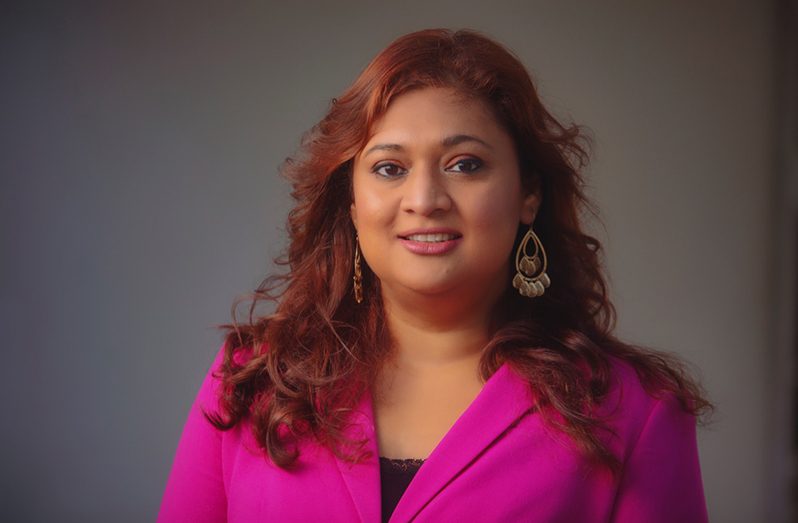By Tamica Garnett
EVEN though declaring that schools will remain closed this September, Education Minister, Priya Manickchand, last Friday, emphasised that the inability to open schools by no means signify an inability to deliver education, and the ministry was working to develop learning kits for students.
The kits are expected to include curriculum material that would enable the children to be meaningfully engaged, even as they continue to remain at home indefinitely.
“We are working to deliver education on the Internet and we’re developing learning kits and packages with print and other materials to deliver to specific categories of students,” the minister informed.
The learning kits will be among a number of measures that the ministry is exploring in order to bridge the continually widening education gap, caused by school closures that were brought about by the COVID-19 pandemic.
Manickchand noted that it is hoped that many of the initiatives could be implemented as early as the second week of September so that more students can be actively engaged.
“Circumstances may change depending on the evolution of COVID-19. But our commitment to providing regular and effective learning opportunities going forward will not. We intend to use this pandemic period as an opportunity to begin to deliver education differently, more effectively and equitably,” the Minister said.
Earlier this year, the MoE had carried out a similar initiative whereby material had been printed and distributed to hinterland pupils in Grades Two, Four and Six, in Regions One, Seven, Eight and Nine. The workbooks covered the four core areas of Mathematics, English Language, Science and Social Studies.
However, little else had been done to ensure any level of across-the-board continuous learning had occurred in the five months that the learning institutions have been closed.
Public schools in Guyana have been closed indefinitely since March 16, and while some teachers have been implementing virtual teaching with their students, this has been limited to students with access to Internet and supporting devices. Additionally, the initiative has been a voluntary one, with no mandatory measures being worked out
Manickchand recently took over the ministerial post earlier this month, following a change of government given the results of the March 2 elections.
MUCH TO BE DESIRED
She said what has obtained over the past few months, has left much to be desired.
“The truth is there has been little or no decisive, coordinated approach to achieving that balance of delivering education and doing so safely. Actions needed in the months after school was closed were not taken in entirety or at all,” Manickchand informed.
Since the closure of schools many of the private schools have begun returning to functionality, utilising various virtual methods, including video conferencing software Zoom, and Google classrooms. However the future and even current affects of the learning gap on the public school students remain uncertain.
The ministry is yet to release any statistics on the exact extent of the impact on students. One official noted, however, that, while the ministry has been doing on-going assessments, many challenges were faced due to the nature of the pandemic.
The official noted that locating the students presented some level of difficulty.
“We have not completed that because we have to get into the homes, we are still actively doing that, it’s not an easy task. We have to get to the individuals. You can’t get to the school just like that because the teachers are not there. So it is an on-going exercise; it is a tedious task that we are pursuing. We don’t have a specific figure we’re still figuring it out,” the official noted.
Notwithstanding, the official noted that this information will need to be gathered as it will have to play a crucial part of the MoE’s crafting of any re-opening plans going forward.
TAILORED APPROACH
“We will have to tailor our approach based on epidemiological patterns, physical spacing, internet connectivity, television reception and teacher availability and we’re really only naming a few of the considerations,” Manickchand elaborated.
Adding that: “No single approach will provide regular and effective learning opportunities to our children across the region …. We will have to therefore use blended multifaceted approach in the coming months. We’re also going to be retraining teachers as far as we can to deliver education differently.”
The minister had previously noted that the Learning Channel will also play an important role going forward.
“We are developing curriculum content for delivery on the learning channel and are working to get the channel broadcasting widely in geographical areas where it has stopped broadcasting or where it has never broadcast before,” she said.
Manickchand also, last Wednesday, met with officials from the National Data Management Authority (NDMA) to explore solutions to deliver education to students using technology.
Some of the persons present at that meeting included the MoE’s Chief Information Technology Officer, Yoganand Indarsingh; MoE’s Systems Development Co-ordinator, Godfrey Munroe; MoE’s Chief Planning Officer, Nicola Johnson; and NDMA General Manager, Floyd Levi.


.jpg)











